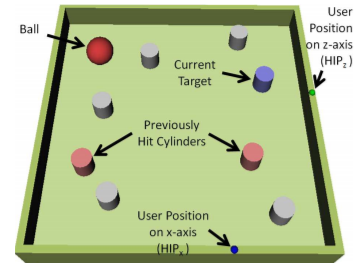
We investigate how collaborative guidance can be realized in multimodal virtual environments for dynamic tasks involving motor control. Haptic guidance in our context can be defined as any form of
force/tactile feedback that the computer generates to help a user execute a task in a faster, more accurate, and subjectively more pleasing fashion. In particular, we are interested in determining guidance mechanisms that best facilitate task performance and arouse a natural sense of collaboration. We suggest that a haptic guidance system can be further improved if it is supplemented with a role exchange mechanism, which allows the computer to adjust the forces it applies to the user in response to his/her actions. Recent work on collaboration and role exchange presented new perspectives on defining roles and interaction. However existing approaches mainly focus on relatively basic environments where the state of the system can be defined with a few parameters. We designed and implemented a complex and highly dynamic multimodal game for testing our interaction model. Since the state space of our application is complex, role exchange needs to be implemented carefully. We defined a novel negotiation process, which facilitates dynamic communication between the user and the computer, and realizes the exchange of roles using a three-state finite state machine. Our preliminary results indicate that even though the negotiation and role exchange mechanism we adopted does not improve performance in every evaluation criteria, it introduces a more personal and humanlike interaction model.
Key words: Human Factors; Evaluation/Methodology; Haptic I/O; Haptic User Interfaces; Haptic Guidance; Dynamic Systems and Control; Multimodal Systems; Virtual Environment Modeling; Human-computer interaction; Collaboration
Authors: A. Kucukyilmaz, S. O. Oguz, T. M. Sezgin, C. Basdogan